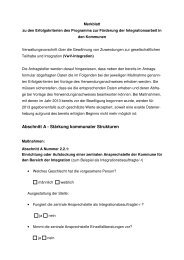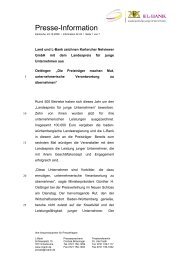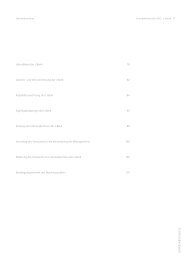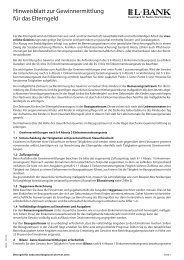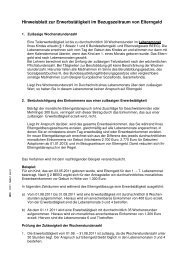Landeskreditbank Baden-Württemberg - L-Bank
Landeskreditbank Baden-Württemberg - L-Bank
Landeskreditbank Baden-Württemberg - L-Bank
You also want an ePaper? Increase the reach of your titles
YUMPU automatically turns print PDFs into web optimized ePapers that Google loves.
Notes to the annual financial statements of<br />
<strong>Landeskreditbank</strong> <strong>Baden</strong>-Württemberg – Förderbank –<br />
for the financial year ended December 31, 2002<br />
Securities in the trading portfolio and liquidity reserve are valued strictly according to the principle of lower<br />
of cost or market value as at the balance sheet date. Securities treated as fixed assets are shown at net book value,<br />
differences between book value and redemption value (premium/discounts) being marked up or down pro rata to<br />
term.<br />
Equity investments in non-affiliated and affiliated companies are valued at the lower of acquisition cost or<br />
fair value, according to the rules applying to fixed assets.<br />
Tangible assets are valued at acquisition or production cost, less scheduled depreciation. Where the value of<br />
an item is expected to continue to decline, unscheduled depreciation has been applied as appropriate. Minor fixed<br />
assets are fully depreciated in the year of acquisition.<br />
Reserves for pension commitments and for obligations under the <strong>Bank</strong>’s employee pension scheme have<br />
been calculated using the method of computation provided for in § 6a of the German Income Tax Act<br />
(Einkommensteuergesetz [EStG]) applying the updated Heubeck mortality tables (Heubeck Sterbetafeln).<br />
Adequate provisions have been made to cover the early retirement scheme provided for by collective agreement<br />
and the part-time employment scheme devised for senior employees, as well as any obligations arising in<br />
connection with long-service bonuses and other benefits.<br />
Other reserves are set at the amount deemed necessary by the exercise of reasonable business judgment to<br />
cover all uncertain liabilities and potential losses on pending transactions.<br />
The <strong>Bank</strong> concludes derivative transactions primarily in order to control interest rate exposure – they are not<br />
valued. The <strong>Bank</strong> also trades in derivatives on its own account and in order to hedge balance sheet items. Market<br />
values are based on interest rates prevailing at December 30, 2002. Transactions for hedging purposes are valued<br />
together with the relevant balance sheet items.<br />
The market values of bonds, notes and derivatives held for the <strong>Bank</strong>’s own account are determined<br />
individually as at the balance sheet date. The <strong>Bank</strong> currently holds four portfolios governed by EUR interest rate<br />
risks and offsets valuation gains and losses within these portfolios. In accordance with the non-parity principle<br />
(Imparitaetsprinzip), any positive balance is not appropriated, whereas a provision is made to cover a negative<br />
balance.<br />
Principles of the German <strong>Bank</strong>ing Act (Kreditwesengesetz [KWG])<br />
Throughout 2002, the <strong>Bank</strong> adhered to Principle I (relating to capital adequacy) and Principle II (relating to<br />
liquidity).<br />
F-55



